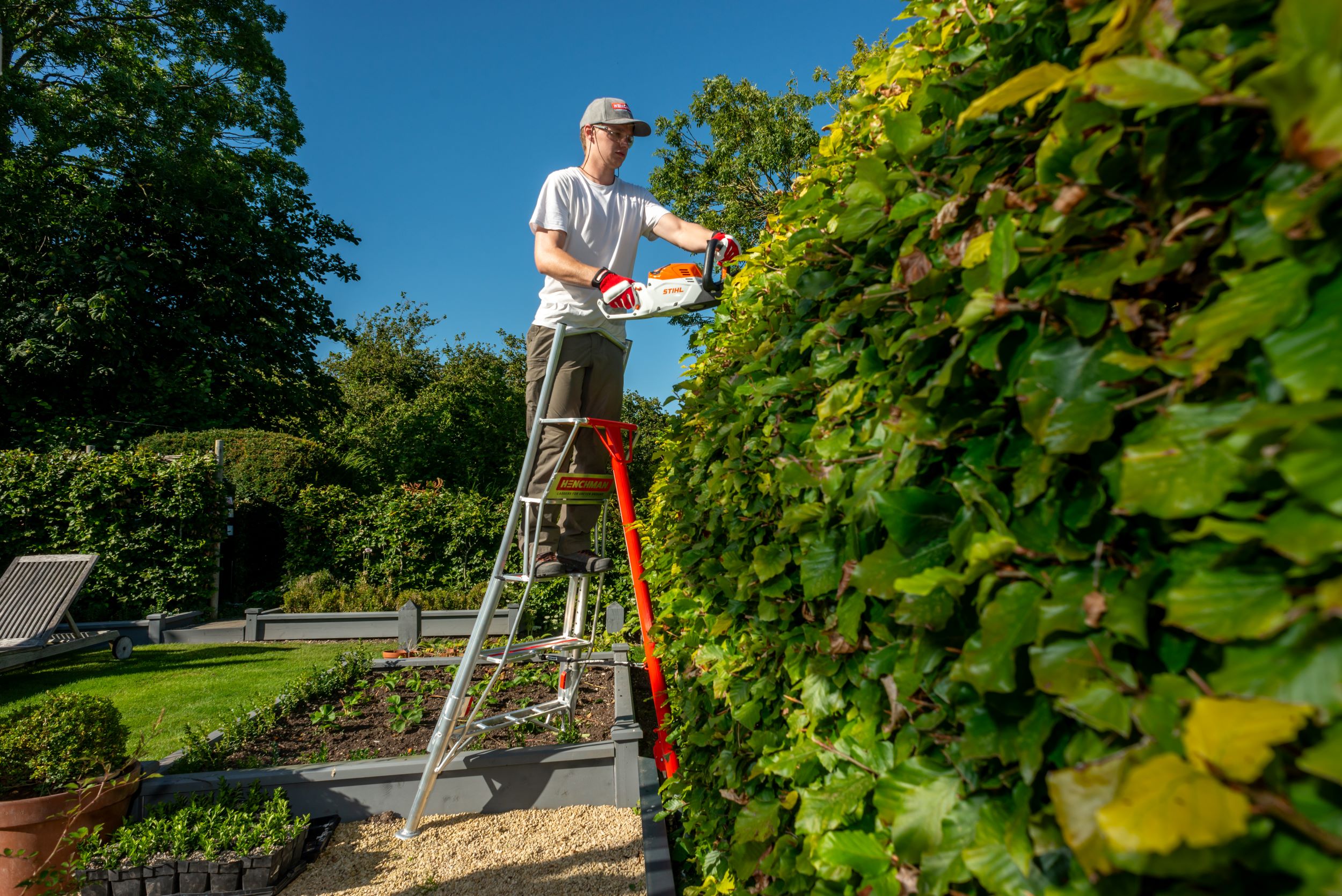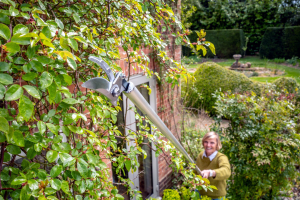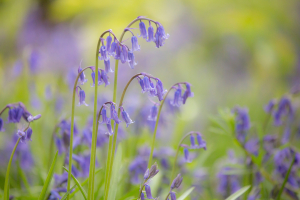Top 10 Essential Gardening Tools

Every gardener needs a complete, reliable set of gardening tools to help create and maintain a luscious garden. Using tools that are not quite up to the job means that your garden will more likely look rough around the edges, and the tools themselves are prone to damage.
Having been well-established in the gardening industry for over 30 years, Henchman has experience working with professional landscapers as well as home gardeners. With that wealth of knowledge, we’ve put together a range of garden tools suitable for any level gardener.
So, whether you’re a complete beginner looking to build your kit or a seasoned gardener ready to refresh your kit, we’ve compiled a list of 10 must-have garden tools to help get you started.
10 must-have garden tools and equipment
Having the right tools will make jobs in the garden much easier and investing in the right garden equipment and understanding how to maintain it will make a worthwhile investment for years to come.
Depending on the size and type of garden you have, you may require more specific and specialist tools. For example, if you’re looking to start a vegetable patch or bed in the garden, make sure to check out our vegetable gardening guide. If you have a smaller more urban garden and are looking for inspiration as to how you can get your thumbs green, see our guide to urban gardening.
Let’s get into our basic garden tool kit that every beginner should have.
1. Gardening Gloves
In every gardener's tool kit should be a good set of gardening gloves. Although they are not essential, they are a great barrier of protection against thorns, splinters, blisters and stubborn dirt, which may get on your fingers and under your nails.
Gloves will become a gardener's best friend when you start rose pruning, but note there are many types of gardening gloves available on the market. So, make sure you’re investing in the right pair for the job.
- Cloth gloves are great for keeping your hands clean. They are machine washable and relatively inexpensive. Perfect for general, everyday gardening jobs.
- Leather gloves are thicker, waterproof and are better for protecting your hands from thorns and cuts.
- Rubber Coated Gloves are best for protection when using chemicals such as pesticides.
Henchman Gardening Gloves are made with hard-wearing leather that’s designed for durability and are stitched for strength and longevity. The snug but flexible fit is to ensure ultimate touch sensation and comfort -great for tackling any garden job! Available in 6 sizes.
2. Secateurs
For trimming shrubs, trees and hedges you can build up quite a tool collection but a pair of secateurs is a versatile tool that can be used for many gardening jobs. A good pair of secateurs is durable enough to cut through thicker branches as well as snip odd branches, twigs, dead stems and smaller pruning jobs.
Being a smaller hand tool, secateurs can manoeuvre into hard-to-reach areas and are easily maintained (anchor to maintaining your tools section) with minimal effort.
The ARS Professional Bypass Secateurs are made from Japanese high-carbon steel, coated in hard chrome to ensure long-lasting performance and reduce the risk of rusting. The ergonomic design will help reduce fatigue when using the blades to snip effortlessly. These secateurs are perfect for pruning jobs, fruit picking, tree maintenance and topiary.
3. Pruning Saw
If you have space in your garden for a tree or two, or a hedge that needs maintaining, a pruning saw may be a worthwhile investment. Great for tree and hedge-trimming tasks, most pruning tasks and even decorative topiary.
When looking for a pruning saw, you’ll find two main differences - straight blades and curved blades.
- Curved blade pruning saws, such as the ARS UV-32E Pruning Saw or the ARS UVR-32 Pro Pruning Saw, are made for speed and efficiency when working higher than shoulder height, or lower than your waist. The curved blade makes it easy to cut at various angles.
- Straight-blade pruning saws, such as the ARS Professional Straight Blade Pruning Saw are for precision cutting. It will cut straight, neat and clean cuts. Straight-blade saws are perfect for decorative trees and pruning thicker branches. They are also good for cutting lumber and are popular with wild campers and bushcraft experts, as they are versatile enough to cut wood for shelter building and firewood.
4. Telescopic Shears / Loppers
Loppers and telescopic shears are pruners with long handles and sharp, solid blades, made for clipping thicker and harder-to-reach branches that standard hand shears cannot.
These tools make it easy to cut overgrowth, thinning out dense foliage and any dead branches that are usually out of reach. The long handles let you trim more accurately when working at greater heights and in tighter spaces.
At Henchman, we have three different sizes of telescopic shears;
- ARS Long-handled Pruners - can extend to 3m
- ARS Telescopic Tree Pruner - can extend to 2m
- ARS Long Reach Pruning Shears - can extend to 0.6m
These tools are good for tree trimming, tidying hedges, fruit picking and wall climbing plant maintenance.
5. Hand Trowel
When most people think of gardening and what tools are required, a hand trowel is probably the immediate go-to.
Whether you’re weeding, planting, sowing or harvesting, a hand trowel is another essential to add to your gardening toolkit.
If you’re new to gardening, or you just like to keep the garden looking tidy with minimal effort, a traditional hand trowel will be a good starting point. You’ll be able to achieve most tasks, like weeding and planting, with ease.
However, if you’re more invested in your garden, you may want to look at the specialist types of hand trowels. These will make your time in the garden much easier.
- Narrow and blunt trowels such as rockery or dixter trowels are best suited for weeding, as well as carefully removing and transporting seedlings.
- Higher sides but similar to most garden trowels, a potting trowel is shaped like a cup and makes it easy to scoop soil and compost.
- Longer and slightly narrower trowels, such as a transplanting trowel, will be used for tasks for transplanting plants into newer and larger spaces.
A weeding trowel has a long narrow blade with a forked tip at the end. It allows you to easily manoeuvre around plants and get right to the root of weeds.
6. Wheelbarrow
Wheelbarrows are a versatile piece of gardening equipment which can be used for many jobs. Wheelbarrows are great at hauling large, heavy loads around the garden, whether it’s compost, gravel or waste.
If you enjoy landscaping, vegetable gardening or you produce a lot of waste, a wheelbarrow will be an essential gardening tool.
Henchman Wheelbarrows come in 3 sizes, 135L, 200L and 350L. They are designed for easy push, pull and tip movements, and you can also get your choice of standard or puncture-proof wheels.
Another feature of the Henchman Wheelbarrow is the towing accessories for the 200L and 350L. You can buy a trailer accessory for use with ride-on mowers or other vehicles with a tow bar.
The other benefit of buying a Henchman Wheelbarrow is the multiple spares and accessories, to keep your barrow going for years and years. All the wheelbarrows are delivered fully assembled.
7. Forks
Garden forks are useful tools to have in the gardening kit. Similar to using a spade, large, long-handle forks can make soil preparation an easy task, while hand forks are great for weeding.
Long-handled forks, such as digging forks, are perfect for use on clay soil or rocky terrain due to their strength. Use a digging fork to break up, aerate or turn over the soil. They can also be used to easily lift and transport plants.
If you’re investing in buying a long-handled fork, you’ll want a hand fork, too. These tools are great for smaller jobs such as weeding, preparing plug holes, aerating small areas of soil and mixing fertilisers. If you’re planning on having more potted plants in your garden, a hand fork is preferred over a larger garden fork.
When you’re looking at purchasing a garden fork, check your garden soil. For hard, clay soil, it may be worthwhile investing in a higher-quality fork to ensure it’s durable enough to withstand harder more compacted soil.
8. Hedge Trimmer
If you’ve got a hedge in your garden, it’s probably been inherited and you may be unsure how to manage it. Depending on the size, you can manage hedges with hand tools such as shears, pruners and saws. However, for larger hedges - or to make your hedge-cutting experience easier - you’ll want to purchase a hedge trimmer.
Hedge trimmers make hedge-cutting an easy and quick task, and there are many options available. The three main differences between these options are petrol, electric and battery.
Electric hedge trimmers are great for smaller hedges and are a good starting option as they’re lightweight, cleaner in terms of emissions, and easy to use. They tend to be quieter and more affordable than traditional petrol-powered hedge trimmers.
A disadvantage to electric hedge trimmers is the power cord, which may not be long enough to tackle large, open spaces. If you require less restricted tools, opt for a battery-powered hedge trimmer which has most of the features of an electric one - the main disadvantage being a limited run-time.
Petrol hedge trimmers offer considerable cutting power. Often popular with professionals who have large numbers of hedges and shrubs to cut, they are easy to refuel and very durable. The disadvantages are they can be much heavier than other electric or battery options and they can be very noisy. They’re a good option if you have a large garden with a large number of hedges to keep in order.
If the weight of the tool is making for a long and unpleasant gardening experience, consider adding the Henchman Lifting Harness to your gardening tools. Taking up to 100% of the weight of the tools, up to 7.5kg, using large tools using the Henchman Harness can increase your periods of working time and take the load off your back and shoulders.
9. Garden Ladders
Garden ladders make tasks such as hedge cutting, window and gutter cleaning, tree maintenance and greenhouse repairs so much easier when you can work without overreaching, or not being able to reach at all.
Most people may think a standard step ladder or extension ladder is suitable for jobs in the garden, but we know that this isn’t the case. Many gardens have soft, uneven terrain, meaning most ladders will sink into soft ground or slip on gravel and paving. The best option for a garden ladder when considering safety and suitability is an Adjustable Tripod Ladder.
Tripods are an extremely safe and stable option but having one with adjustable legs ensures you’re staying level even on uneven ground.
Our Henchman Fully Adjustable Tripod Ladder features clawed feet which help grip into soft, uneven terrain (with removable rubber feet to keep the ladder from slipping on harder surfaces such as pavements), each leg is fully adjustable, meaning you can keep the ladder level minimising risk of falls. At the top of the ladder, we have a platform rung for a more comfortable experience when standing for long periods of time and the guardrail means you can safely work hands-free whilst maintaining three points of contact at all times.
Find out more details about our Fully Adjustable Tripod Ladders, or use our Find a Ladder tool to see which size or range is most suited to your garden tasks. If you’re a professional gardener, take a look at our PRO range.
10. Hoe
A simple tool that some may overlook, but a garden hoe can be used in a variety of ways, therefore making it an essential tool for any keen gardener.
Garden hoes can be used for weeding, raking in narrow spaces and in between plants, making seed drills and covering sowed seeds. There are a few different types that have been specially designed for specific garden jobs:
- Dutch hoe - the most common type of garden hoe, and is suitable for most jobs a garden hoe would be used for such as weeding and cultivating.
- Heart-shaped hoe - made to help break up hard soil, it can also be used to make seed drills.
- Draw hoe - the most basic option for a garden hoe. The paddle meets the handle at a 90-degree angle and is used in an up-and-down motion. It’s great for breaking up compacted soil.
- Stirrup hoe - also known loop hoe, this is a good choice for stubborn or persistent weeds.
Maintaining your garden tools
Once you’ve stocked up and are happy with your toolkit, knowing how to look after them is the next step. Maintaining your garden tools is a relatively painless task - the most important thing to remember is keeping them clean and dry. Any moisture on metal can cause rusting and on wood can cause cracking and rot, so if you’re investing in the right tools, you’re going to want to keep them in good condition for as long as possible.
Our 3 easy top tips for tool maintenance are:
- Clean and dry after every use.
- Store in a dry place - ideally hanging so any moisture can run off.
- To keep tools in great condition - oil metal blades and wooden handles to prevent rusting and cracking.
If you need to know more about how to look after your garden tools, see our Garden Tool Maintenance Guide.
Gardening Tools from Henchman
Henchman has a range of gardening tools such as smaller hand tools, including secateurs and saws as well as our award-winning Tripod Ladders.
All our tools can be used at any skill level, from beginner to professional.
If you’re new to gardening, we also have our short, informative gardening guides covering a range of topics including rose pruning, veg growing, topiary and monthly garden guides.
If you have any questions about any Henchman products to help with choosing a ladder size, give our team a call at 03333 444 229 or email info@henchman.co.uk



